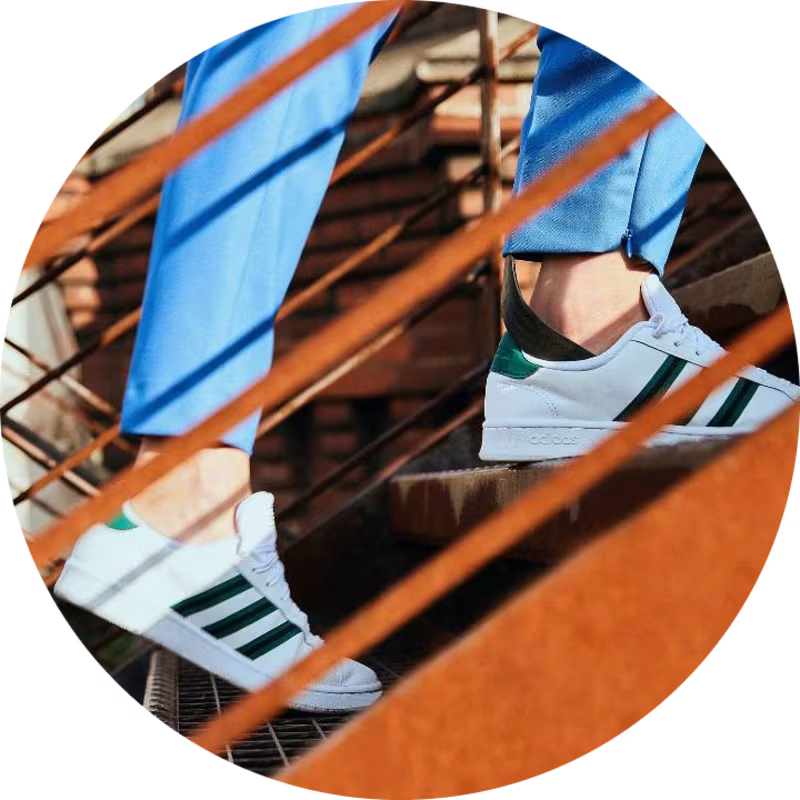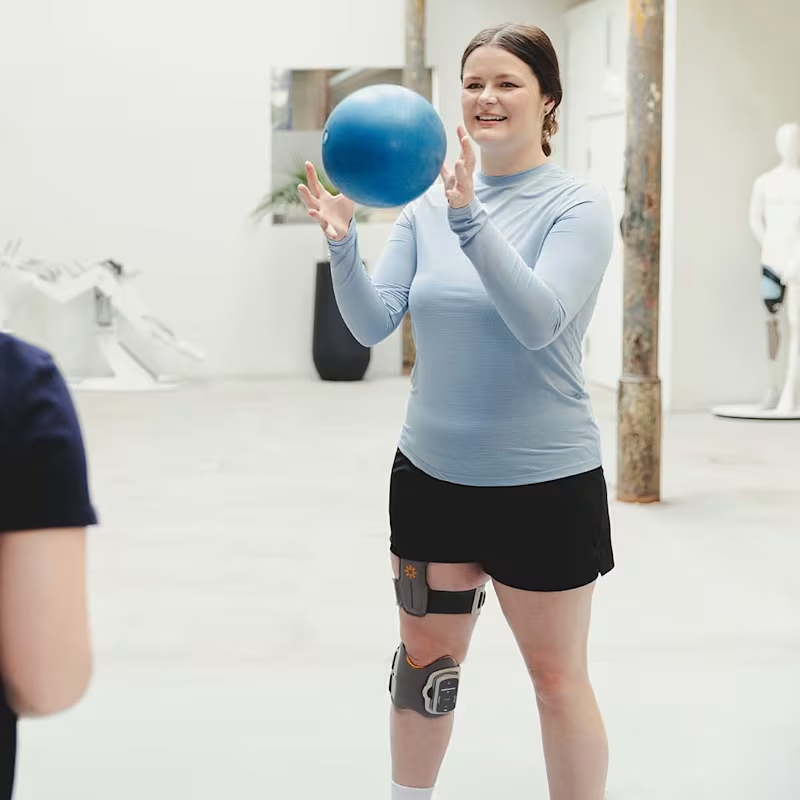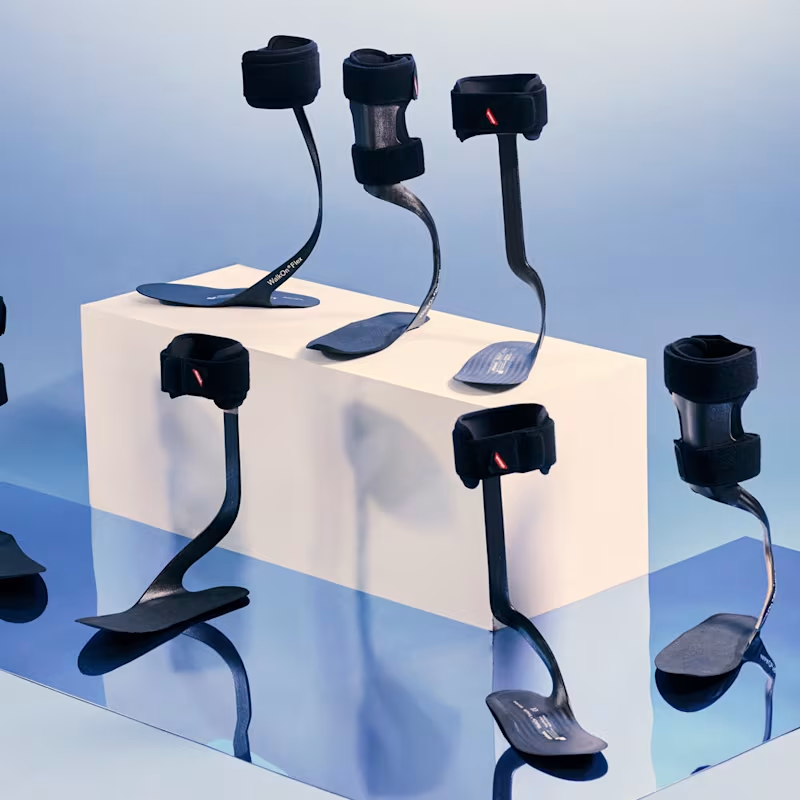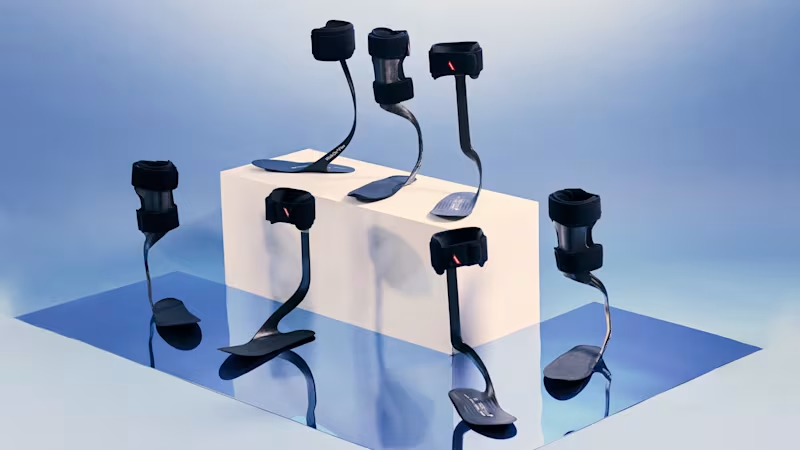


Drop Foot
What is drop foot?
Drop foot is a neurological disorder that affects the muscles responsible for lifting the foot. This causes difficulty lifting the foot and can affect walking and overall mobility. Drop foot can occur in one or both feet and in some cases may be temporary while in others it can be long-term. Keep reading to learn more about the causes, treatment options and support available for those with drop foot.
How does drop foot occur?
Drop foot is usually caused by an issue with the nerves. This can be due to a disruption in the signal from the brain, spinal cord, or the nerve itself.
Possible causes of drop foot from nerve damage:
Fractures in the knee or lower leg involving the nerves
Compression damage caused by staying in a certain position for a long time
Another cause of drop foot weakness is damage to the central nervous system (brain or spinal cord) due to an underlying disease or damage following trauma. In this case, the drop foot weakness is usually progressive, but in other cases, this may not be the case.
Nerve injury to the muscle lifting the foot
Stroke
Multiple sclerosis
Traumatic brain injury
Cerebral palsy
Paraplegia

What does drop foot look like?
Drop foot, is most visible during the swing phase when walking. The foot does not lift and the toes can catch on the floor as the leg swings through. This can lead to an increased risk of falls and compensation from other joints such as excessively bending the knee and hip in order to clear the ground.
Walking in this way takes a great deal of concentration and can be tiring. As a result, long distances can be a challenge and quality of life negatively affected.

How is drop foot diagnosed?
Drop foot can be diagnosed in several different ways. Here are some common diagnostic procedures:
Medical history: The doctor will first take a detailed medical history to learn about your symptoms and any previous injuries or illnesses.
Physical exam: The doctor will then examine your feet, legs and hips for signs of muscle weakness, loss of sensitivity, or other abnormalities. They will also look for the presence of reflexes in the affected areas.
Electromyography (EMG): This procedure measures the electrical activity of the muscles. It determines whether the nerves that supply the dorsiflexor muscles are functioning properly.
Nerve conduction velocity test: This test is done to measure the speed and efficiency of nerve conduction in the affected area. Electrodes are placed in different locations to measure the nerve's response to electrical stimuli.
Imaging techniques: In some cases, imaging techniques such as X-rays, MRI or CT may be used to identify structural abnormalities or injuries in the affected area.
It is important to note that the exact diagnostic procedures may vary from case to case. The final diagnosis should always be made by the treating doctor who considers your situation and symptoms.
How is drop foot treated?
Treatment of drop foot aims to improve the ability to lift the foot and restore mobility. A commonly used method is the use of orthoses or splints that stabilise and help elevate the foot. Physiotherapy and targeted exercises can also help strengthen muscles and improve mobility.
Functional electrical stimulation (FES) can be used to activate nerves that the central nervous system no longer controls. The intensity of the electrical impulse is precisely tailored to the patient and reaches the peroneal nerve, which is responsible for lifting the foot. The nerve passes the signal onto the muscles in the lower leg, which then lifts the foot.
In some cases, drug treatment or injections into the affected muscles may be considered to reduce their activity and relieve symptoms. In severe cases, surgical interventions may be necessary to repair or reroute nerves or tendons.
It is important that people with drop foot work closely with healthcare professionals, such as doctors, physiotherapists and orthotists to receive the best possible treatment and care. A combination of different therapeutic approaches can help alleviate symptoms and improve the quality of life of those affected.
Drop foot is a challenging condition, but with the right support and treatment, those affected can regain their mobility and take part in daily activities once again.

What solutions are available to help with drop foot?
Below you can find a number of solutions available from Ottobock that can help with drop foot. Your doctor will be able to help decide which device is the most suitable for you.



